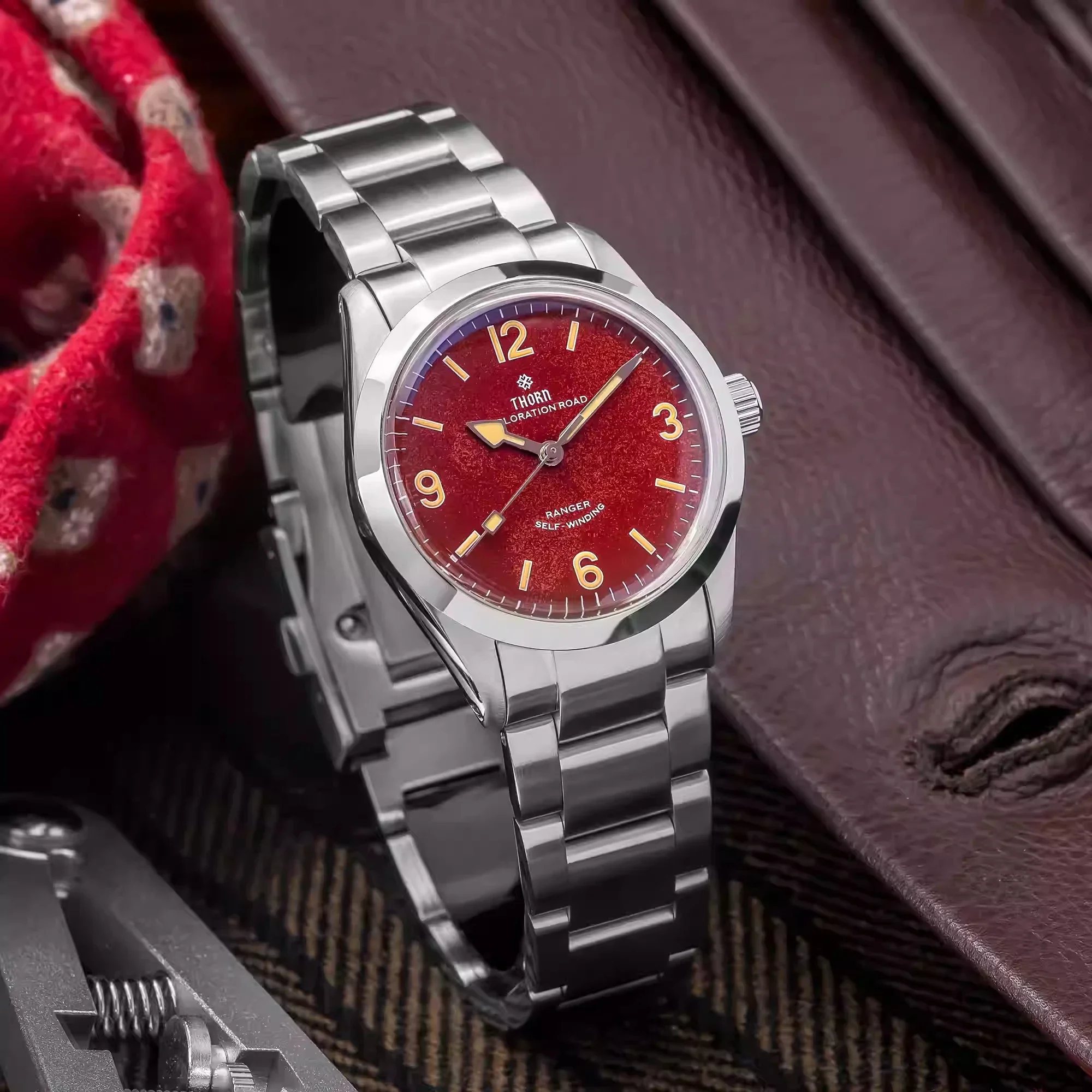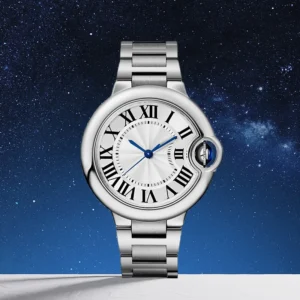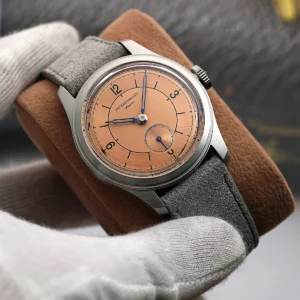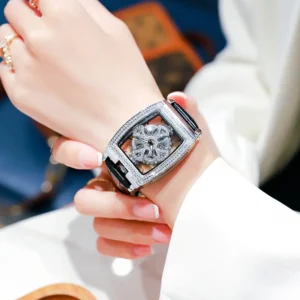1. Understanding the Essence of Dress Watches: Form Meets Function
A dress watch represents the quintessential expression of horological restraint and refinement. At its core, a dress watch serves a specific purpose: to complement formal attire while providing time-telling functionality in the most elegant manner possible. Unlike their sportier counterparts, these timepieces embrace the philosophy of “less is more,” offering subtle sophistication rather than bold statements.
Dress watches traditionally accompany formal occasions—black-tie events, business meetings, and situations where making a refined impression matters. Their design language speaks of understated confidence, with every element carefully considered to achieve harmony and balance. This distinguishes them dramatically from sports watches, dive watches, or field watches, which prioritize robustness and specialized functionality over aesthetic refinement.
What makes dress watches truly remarkable is how each design element serves dual purposes. The thin case profile isn’t merely stylish—it allows the watch to slip discreetly under a shirt cuff. The clean dial isn’t just visually pleasing—it ensures legibility at a glance. This marriage of form and function creates timepieces that have remained relevant through changing fashion trends.
Understanding the distinct features of dress watches helps appreciate their unique position in watchmaking tradition. Their design language developed not from arbitrary aesthetic choices but from the practical requirements of formal settings, where the defining characteristics of classic dress watches continue to guide modern interpretations.
2. Case Design: The Foundation of Elegance
The case of a dress watch sets the foundation for its overall character, with slimness being perhaps its most crucial attribute. Traditional dress watches measure between 7-11mm (0.28-0.43 inches) in thickness, allowing for discreet wear under formal attire. This thinness represents not just an aesthetic choice but a technical achievement that watchmakers have refined over generations.
Case diameter follows similar principles of restraint, though contemporary tastes have somewhat expanded the traditional range:
- Traditional dress watch diameter: 33-36mm (1.3-1.4 inches)
- Modern dress watch diameter: 38-41mm (1.5-1.6 inches)
- Ideal size for formal settings: Proportional to wrist size, typically favoring the smaller end of the spectrum
While the round case shape remains the quintessential dress watch profile, other elegant variations include:
- Rectangular: Offering architectural precision and Art Deco sensibility
- Tonneau (barrel-shaped): Providing a subtle departure from tradition while maintaining elegance
- Cushion: Softening the corners of a square design for versatile formality
Material selection further defines the case character. Precious metals like gold and platinum communicate luxury and formal intent, while high-grade stainless steel offers versatility and durability. The finishing techniques applied—predominantly high-polish with occasional brushed elements—dramatically impact how light plays across the watch, enhancing its presence without drawing undue attention.
Creating ultra-thin cases presents significant engineering challenges. Watchmakers must balance structural integrity with elegance, often requiring specialized movement designs and case construction techniques. This technical sophistication directly influences how case size trends in dress watches have evolved over time while maintaining their essential character.
For those seeking the perfect balance of elegance and wearability, exploring thin automatic dress watches reveals how contemporary watchmaking achieves remarkable slimness without compromising mechanical integrity.
3. Dial Design: The Face of Sophistication
The dial is where a dress watch most clearly expresses its identity, adhering steadfastly to the principle that restraint conveys sophistication. Unlike sports or tool watches that often feature busy displays packed with information, dress watch dials embrace negative space and careful proportions to achieve their refined appearance.
The classic dress watch color palette remains intentionally limited:
- White and silver: Traditional choices offering maximum versatility
- Black: Providing dramatic contrast and formal presence
- Cream and champagne: Offering warmth while maintaining elegance
- Deep blue: A contemporary option that maintains formality while adding subtle character
Hour markers on dress watch dials typically fall into several established categories:
- Applied batons: Clean, modern, and offering subtle dimension
- Roman numerals: Traditional and formal, conveying classical elegance
- Arabic numerals: When executed in a refined manner, providing legibility with charm
- Minimal indices: The ultimate expression of restraint, often as simple dots or line markers
What elevates a truly exceptional dress watch dial is its texture and finishing. These surface treatments create visual interest without compromising the overall restraint:
- Sunburst: Radiating lines that catch light in dynamic ways
- Guilloché: Intricate geometric patterns engraved mechanically
- Lacquered: Perfectly smooth and reflective for a pristine appearance
- Matte: Subtle, non-reflective finish for understated elegance
The arrangement of these elements follows principles of balance and proportion, with symmetry playing a crucial role in creating a sense of harmony. The definitive guide to dress watch dials explores these elements in greater detail, illustrating how watchmakers achieve perfect balance between decoration and restraint.
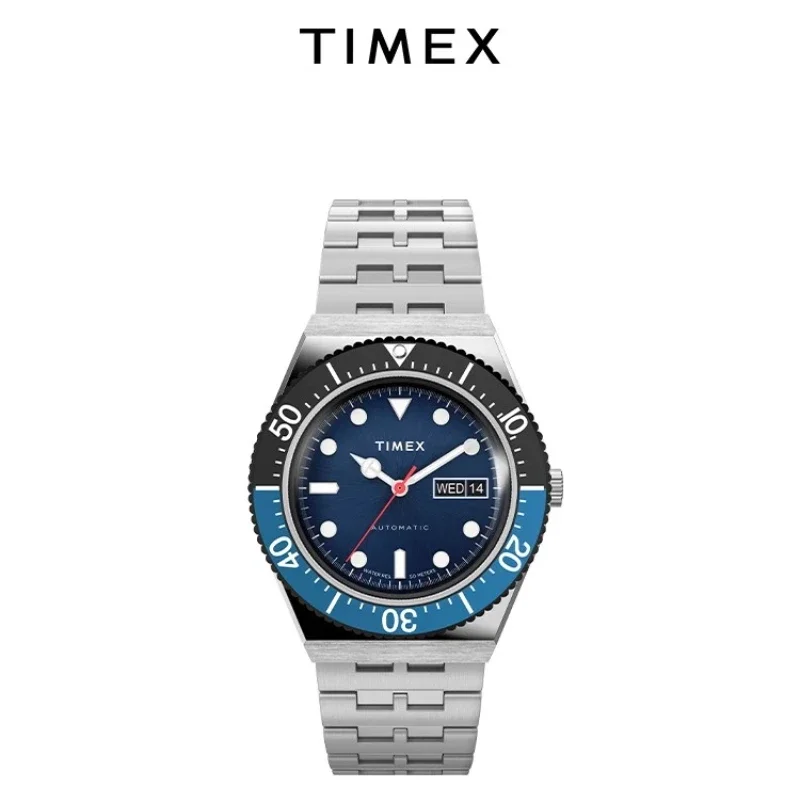
4. Hand Design: The Graceful Indicators
Watch hands do more than merely indicate time—they bring a dress watch’s dial to life through their shape, proportion, and finishing. The perfect dress watch hands complement the dial markers while maintaining legibility and elegance.
Several classic hand styles dominate dress watch design:
- Dauphine: Broad, faceted hands that taper to a point, creating dramatic light play
- Leaf: Gently curved with a central spine, offering organic elegance
- Stick: Minimalist and straight, perfect for modern interpretations
- Sword: Wider at the base with a sharp taper, providing excellent legibility
- Alpha: A refined variant of sword hands with more subtle proportions
Hand length represents a critical element of proper dress watch design. Ideally, the minute hand should precisely reach the minute track or indices, while the hour hand extends to roughly 2/3 of the dial radius. This precision creates visual harmony while ensuring practical time-reading.
Many purist dress watches feature only two hands (hours and minutes), omitting seconds entirely in the pursuit of simplicity. However, a small seconds subdial at 6 o’clock remains a traditional dress watch configuration, adding subtle animation without disturbing the dial’s balance.
The finishing applied to hands dramatically impacts their appearance:
- Polished: Reflecting light brilliantly for maximum visibility
- Brushed: Offering subtle texture and reducing glare
- Blued steel: Created through careful heat treatment, providing distinctive color while maintaining elegance
For excellent examples of how these hand styles complement different dial designs, our collection of classic automatic dress watches demonstrates the interplay between these crucial elements.
5. Crystal and Bezel: Framing the Tableau
The crystal and bezel work in harmony to frame the dial while protecting its delicate elements. Their design significantly impacts both the watch’s appearance and functionality.
For crystal materials, sapphire stands as the undisputed premium choice in dress watches due to its:
- Exceptional scratch resistance (nearly impossible to mark in daily wear)
- Optimal clarity for viewing the dial
- Ability to receive anti-reflective coatings
Crystal profile choices include:
- Flat: Clean, modern, and providing maximum legibility
- Slightly domed: Adding subtle dimension without distortion
- Highly domed (box crystal): Creating vintage charm with some visual distortion at angles
Anti-reflective coating technology has transformed dress watch legibility. Applied to the underside (and sometimes top) of the crystal, these coatings dramatically reduce glare in formal settings where lighting may be subdued or directional, ensuring the watch remains legible without distracting reflections.
Dress watch bezels typically feature minimalist designs that integrate seamlessly with the case:
- Thin and polished: The classic approach, extending the case’s clean lines
- Stepped: Adding subtle architectural interest while maintaining elegance
- Slightly curved: Creating a smooth transition from crystal to case
The bezel’s proportions must balance perfectly with the case and crystal, as these three elements together establish the watch’s visual framework. This harmonious interaction forms the foundation for the dial’s presentation, much as a picture frame complements the artwork it surrounds.
The evolution of horological elegance has continuously refined these elements, allowing today’s dress watches to achieve remarkable thinness while maintaining structural integrity and visual refinement.
6. Complications: The Art of Restraint
In horology, “complications” refer to any function beyond simple time-telling. For dress watches, complications represent an area where restraint proves particularly vital. While sports and tool watches often celebrate technical complexity with multiple functions, dress watches embrace subtlety.
The purest dress watches feature only hours and minutes—a minimalist approach that perfectly aligns with their formal purpose. However, several complications can be tastefully integrated without compromising elegance:
- Date display: Preferably color-matched to the dial and properly sized
- Small seconds: Traditionally at 6 o’clock, adding subtle movement
- Moonphase: An astronomical complication with natural elegance
- Power reserve: When executed discreetly, providing practical information
The proper integration of these elements requires careful consideration:
- Date windows should ideally match the dial color rather than standing out as stark white
- Complications should maintain the dial’s overall balance and symmetry
- Subdials should be proportional and contribute to the overall design harmony
Complications that typically don’t belong on dress watches include chronographs, GMT functions, and bold day-date displays—all of which add visual complexity that contradicts the dress watch ethos.
The challenge lies in balancing functionality with aesthetic purity. When executed properly, complications enhance rather than detract from a dress watch’s elegance, as seen in our collection of moonphase automatic watches that demonstrate this delicate balance.
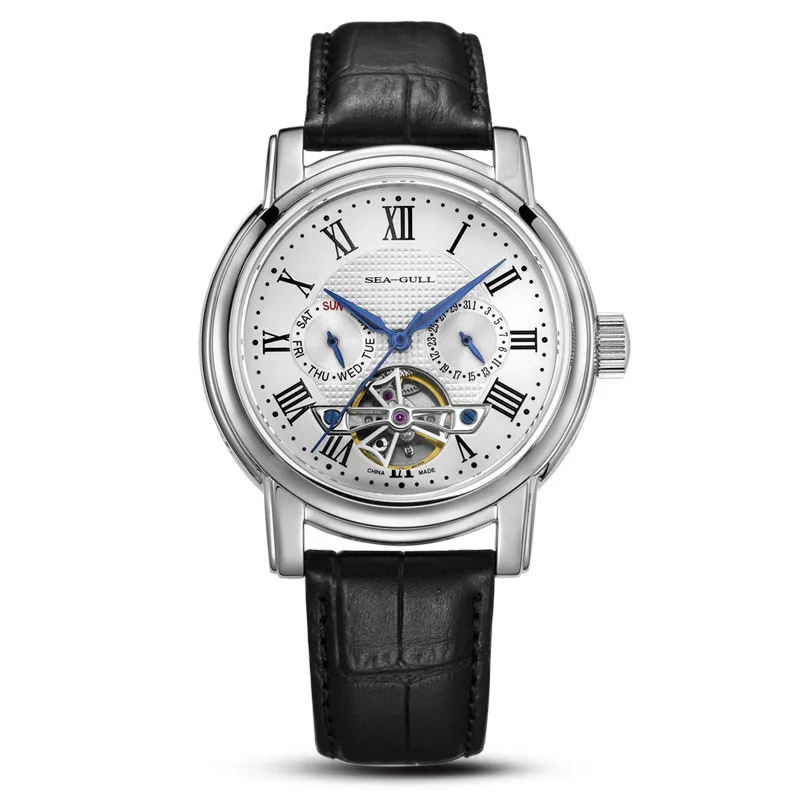
7. Strap and Bracelet: The Final Touch
The strap or bracelet of a dress watch does more than secure it to your wrist—it completes the design story while influencing how the timepiece pairs with formal attire. Material choice significantly impacts both appearance and comfort during extended wear.
Leather remains the quintessential dress watch strap material, with several distinguished options:
- Alligator: Featuring distinctive square scales with visible pores
- Crocodile: Displaying a more irregular pattern than alligator
- Calfskin: Offering smoother texture and exceptional comfort
Color selection for dress watch straps typically follows conservative guidelines:
- Black: The most formal option, perfect for black-tie events
- Dark brown: Versatile for business attire and less formal occasions
- Medium brown: Adding warmth while maintaining professionalism
- Navy blue: A contemporary alternative complementing blue suits
Strap width proportions matter significantly, typically ranging from 18-22mm (0.7-0.87 inches) depending on case size. The proper proportion creates visual balance, with the strap appearing neither too thin nor too substantial for the case.
While leather dominates dress watch tradition, metal bracelet alternatives can work beautifully when executed with refinement:
- Fine link: Delicate construction that maintains elegance
- Milanese mesh: Finely woven steel creating a sophisticated textile-like appearance
Closure mechanisms also influence both appearance and function:
- Pin buckle: Traditional, unobtrusive, and classically elegant
- Deployant clasp: Hidden mechanism that preserves strap condition while adding convenience
For inspiration on how different strap options complement various dress watch designs, our collection of automatic dress watches showcases diverse yet elegant combinations.
Classic Automatic Dress Watches, Day Date Automatic Watches, Perpetual Calendar Automatic Watches
Price range: $540.60 through $574.60 Select options This product has multiple variants. The options may be chosen on the product pageClassic Automatic Dress Watches, GMT Automatic Watches, GMT Pilot Watches
Price range: $1,240.86 through $1,463.33 Select options This product has multiple variants. The options may be chosen on the product pageClassic Automatic Dress Watches, Thin Automatic Dress Watches
$437.64 Select options This product has multiple variants. The options may be chosen on the product pageClassic Manual Wind Watches, Manual Wind Dress Watches
Price range: $425.50 through $462.50 Select options This product has multiple variants. The options may be chosen on the product page- $480.96 Select options This product has multiple variants. The options may be chosen on the product page
- $104.12 Select options This product has multiple variants. The options may be chosen on the product page
8. Movement Considerations: Inner Beauty and Thinness
While often hidden beneath the dial, a dress watch’s movement represents its beating heart and technical foundation. The movement choice significantly impacts both the watch’s profile and its horological integrity.
Mechanical movements maintain preference in fine dress watches for several compelling reasons:
- Heritage and tradition aligning with the dress watch ethos
- The romance of handcrafted mechanical engineering
- Superior thinness compared to most quartz alternatives
- Opportunity for artistic decoration visible through exhibition casebacks
The perpetual debate between manual and automatic winding finds special relevance with dress watches:
- Manual movements: Often thinner, more traditional, and offering connection through daily winding ritual
- Automatic movements: Providing convenience while maintaining mechanical prestige
Movement thinness plays a crucial role in achieving the ideal dress watch profile. Ultra-thin calibers may measure just 2-3mm (0.08-0.12 inches) thick, enabling case profiles under 7mm (0.28 inches) total thickness. This remarkable engineering requires specialized design approaches:
- Reduced component sizes and tolerances
- Merged functional components
- Strategic architecture to minimize vertical space
Movement decoration elevates a dress watch’s appeal, particularly when visible through exhibition casebacks. Traditional finishing techniques include:
- Geneva stripes: Parallel decorative lines creating light play
- Perlage: Overlapping circular patterns resembling pearls
- Blued screws: Heat-treated for both beauty and corrosion resistance
- Beveled edges: Angled and polished component edges catching light
These decorative elements transform the movement from mere mechanism to mechanical artwork. Our collection of manual wind dress watches showcases how traditional hand-wound movements complement the dress watch aesthetic.
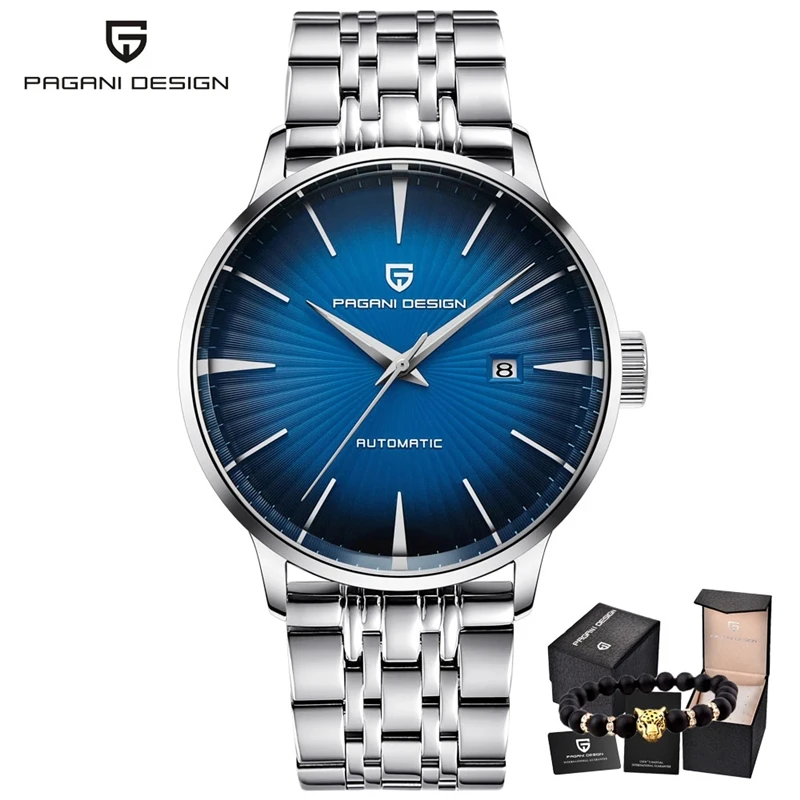
9. Bringing It All Together: Harmony and Proportion
The true mastery of dress watch design emerges not from any single element but from how all components work in concert to create a harmonious whole. This holistic approach relies on fundamental design principles that transcend trends and fashions.
The concept of design coherence demands that each element relates purposefully to others:
- Case lines should flow naturally into lugs and bracelet
- Dial elements should maintain consistent visual language
- Hand design should echo the style of hour markers
- Finishing techniques should create visual unity across components
Many watchmakers apply principles of sacred geometry, particularly the golden ratio (approximately 1:1.618), to create naturally pleasing proportions:
- Dial diameter to case diameter relationships
- Hand length proportions relative to dial size
- Subdial positioning and sizing
- Case height-to-width ratios
The essence of proper dress watch design lies in restraint rather than exuberance. Each element should serve a purpose, with nothing superfluous or merely decorative. This discipline creates timepieces that whisper rather than shout, commanding attention through refinement rather than boldness.
True elegance in minimalist dress watch design emerges when every element exists in perfect relation to others, creating a visual harmony that transcends trends. Knowing how to identify a dress watch relies on recognizing this cohesive design approach rather than focusing on isolated features.
10. How to Evaluate a Dress Watch: Design Criteria
When assessing dress watch design quality, applying a structured evaluation framework helps identify truly exceptional timepieces. Consider these key criteria:
- Case finishing: Look for crisp transitions between polished and brushed surfaces, with no visible tool marks or imperfections
- Dial execution: Examine hour marker alignment, printing quality, and surface consistency under magnification
- Hand alignment: Verify that hands align precisely with markers when indicating the hour and don’t overlap improperly
- Proportion harmony: Assess how case thickness relates to diameter, how dial elements relate to each other, and overall visual balance
- Detail integration: Evaluate how design elements like date windows, crown design, and lug shape contribute to the whole
- Versatility: Consider how the watch transitions between formal and business settings
The concept of “quiet confidence” perfectly captures the essence of superior dress watch design. Rather than demanding attention, exceptional pieces reward closer inspection with thoughtful details and perfect execution. They enhance the wearer’s appearance without dominating it—the hallmark of genuine elegance.
The ability to define what makes a classic dress watch comes from understanding these evaluation criteria and recognizing how they combine to create timepieces that transcend mere functionality to become expressions of refined taste.
11. Contemporary Interpretations: Tradition Meets Innovation
Modern dress watches navigate the delicate balance between honoring horological tradition and embracing contemporary preferences. Today’s interpretations typically maintain the essential design philosophy while adapting certain elements to current tastes.
Key contemporary trends include:
- Slightly larger case diameters (typically 38-40mm or 1.5-1.57 inches) compared to vintage pieces
- Increased water resistance for practical daily wear
- Enhanced legibility through subtle dial contrasts and anti-reflective crystals
- Alternative materials like ceramic and titanium executed with traditional finishing techniques
- Broader color palettes expanding beyond the classic white, silver, and black
Modern manufacturing techniques allow unprecedented precision and consistency in execution, with CNC machining and advanced finishing processes achieving results once possible only through costly hand craftsmanship. This democratizes access to refined design while maintaining the essential character of dress watches.
Perhaps the most significant contemporary shift lies in versatility. While traditional dress watches were created exclusively for formal occasions, many modern interpretations balance formality with adaptability. This evolution recognizes that today’s professionals need timepieces transitioning seamlessly between environments, as explored in our guide to dress casual watches.
12. Practical Considerations: Selecting Your Dress Watch
When choosing a dress watch that aligns with both horological principles and personal needs, several practical questions deserve consideration:
How should I match a dress watch to my wrist size?
Select a diameter that allows some dial visibility but doesn’t extend beyond your wrist edges. Typically, smaller wrists (under 6.5 inches/16.5cm) pair best with watches under 38mm (1.5 inches), while larger wrists can accommodate up to 40-42mm (1.57-1.65 inches) while maintaining proportion.
Should my watch metals match my other accessories?
Traditional etiquette suggests matching your watch case to other metals you wear (wedding band, cufflinks). However, contemporary styling allows more flexibility, particularly with stainless steel, which coordinates with both warm and cool metals.
How formal should my dress watch be?
Consider your typical usage scenarios. For frequent black-tie events, a classic precious metal watch on black leather represents the ideal. For business settings with occasional formal events, a versatile stainless steel model on brown leather provides greater adaptability.
Is case thickness or diameter more important for formality?
Thinness typically contributes more to a dress watch’s formal character than diameter. A slender 40mm watch often appears more appropriate with formal attire than a thick 36mm model that struggles to slide under a cuff.
For more specific guidance on selecting the perfect timepiece based on features and proportion, our quintessential guide to dress watch features offers additional insights tailored to different preferences and needs.
13. Do Dress Watches Need to Be Expensive?
A common misconception suggests that proper dress watches must come with luxury price tags, but elegant design principles exist across diverse price categories. While higher expenditure typically delivers superior materials and finishing, the core elements of dress watch design remain achievable at various price points.
Key differences between price segments usually involve:
- Movement quality and decoration (machine-finished vs. hand-finished components)
- Case material (stainless steel vs. precious metals)
- Crystal quality (mineral vs. sapphire with advanced anti-reflective coatings)
- Dial execution (printed vs. applied markers, complexity of textures)
- Overall finishing precision and attention to detail
What remains most important across all price points is adherence to fundamental design principles: clean aesthetics, proper proportions, and thoughtful integration of elements. A well-designed, modestly-priced dress watch following these principles often presents more elegantly than an expensive piece with confused design direction.
Our collection of minimalist automatic watches demonstrates how refined design language can create exceptional dress watches at accessible price points, proving that elegance doesn’t necessarily require extraordinary investment.
14. Can a Dress Watch Be Worn Daily?
While dress watches were historically reserved for special occasions, many contemporary designs offer sufficient versatility and durability for daily wear. Several considerations affect everyday practicality:
Water Resistance: Look for at least 30 meters (98 feet) of water resistance for basic protection against splashes and rain. Some modern dress watches offer 50-100 meters (164-328 feet) without compromising elegance.
Crystal Material: Sapphire crystal provides superior scratch resistance for daily wear compared to mineral glass or acrylic alternatives.
Strap Options: Consider watches that accommodate both leather straps for formal settings and bracelet options for more casual environments. Some models feature quick-change systems facilitating this versatility.
Movement Robustness: Modern automatic movements often incorporate shock protection and anti-magnetic properties, enhancing reliability for daily wear.
For those seeking a single watch solution, the line between dress watches and everyday timepieces continues to blur. Understanding the differences between dress watches and standard watches helps identify models that maintain formal elegance while offering practical durability.
15. Glossary of Dress Watch Terminology
Applied markers: Dial indices that are manufactured separately and attached to the dial rather than printed, creating dimension and visual interest.
Cabochon: A polished, unfaceted gemstone often found on dress watch crowns, typically blue sapphire or black onyx.
Dauphine hands: Triangular-shaped hands with a faceted surface that creates light play and dimension.
Deployant clasp: A folding mechanism that secures a leather strap without creating significant wear on the leather itself.
Exhibition caseback: A transparent case rear allowing view of the movement, typically made of sapphire crystal.
Guilloché: A decorative technique creating repetitive, geometric patterns engraved into the dial or movement parts.
Hobnail pattern: A dial texture featuring small, raised squares resembling nail heads (also called “Clous de Paris”).
Indexes: Markers indicating hours on a watch dial, whether printed or applied.
Lugs: The extensions of the watch case that hold the strap or bracelet.
Onion crown: A rounded, fluted crown design resembling an onion’s layers, offering grip while maintaining elegance.
Perlage: A decorative finish of overlapping circles applied to movement plates and bridges.
Small seconds: A separate subdial displaying seconds, typically positioned at 6 o’clock on dress watches.
Subseconds: Alternative term for small seconds display.
Sunburst dial: A finish with radiating lines from the dial center creating dynamic light reflection.
Tonneau case: A barrel-shaped watch case, wider in the middle than at the ends, providing an elegant alternative to round cases.

